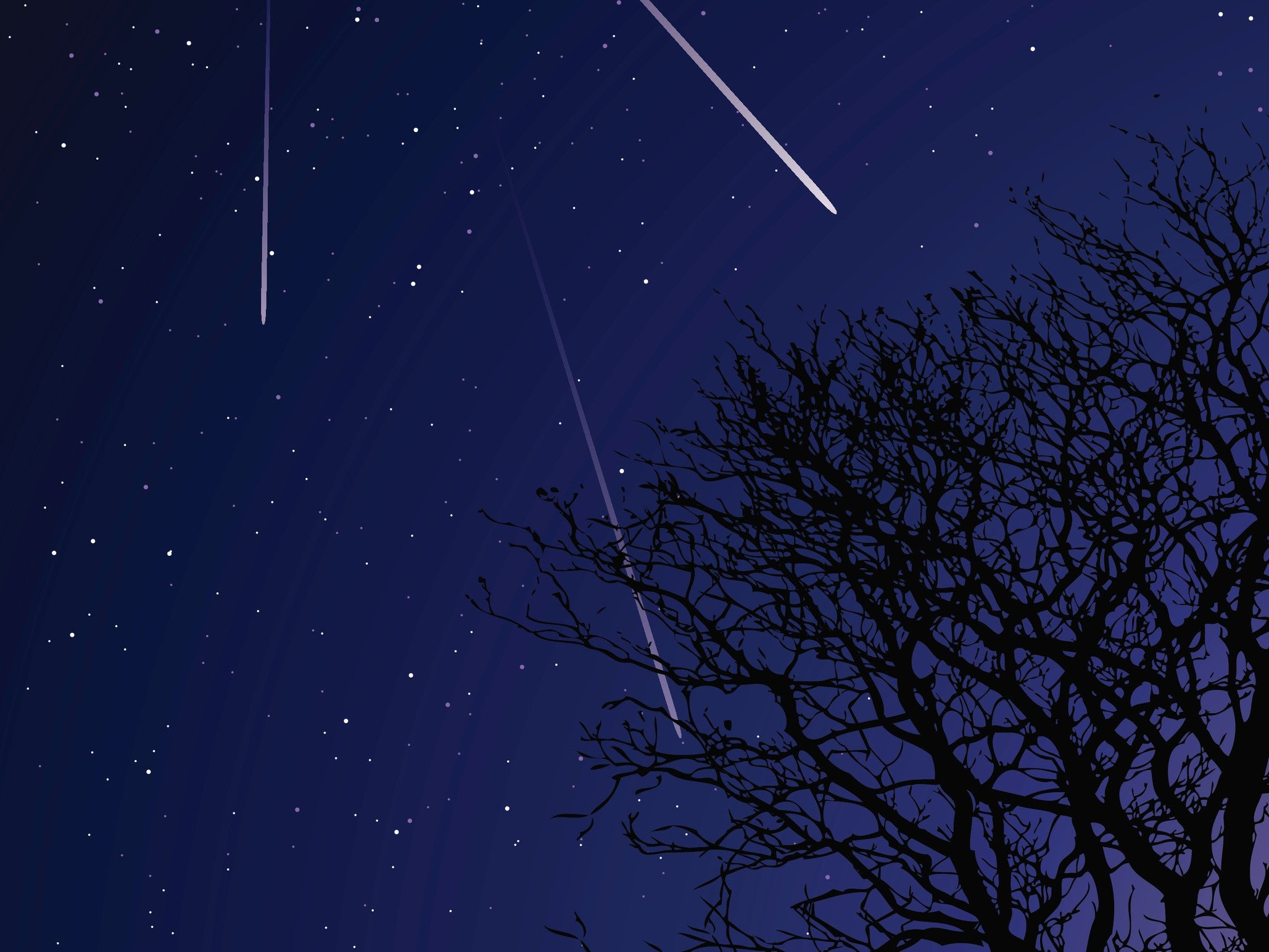-
Draconids shower
6th to 10th October, 2024

Draconids shower Captured. Credit: independent.co.uk
The Draconid meteor shower was active between Oct. 6 and Oct. 10 and peaked around Oct. 8. Meteor showers are named after the constellation from which the meteors appear to emanate. From Earth's perspective, the Draconids appear to come approximately from the direction of the constellation Draco, the dragon. This shower is caused by the comet P/Giacobini-Zinner.The little comet measures just 1.24 miles (2 kilometers) in diameter and takes about 6.6 years to orbit the sun.
Each time the "dirty snowball" returns to the inner solar system its nucleus sheds ice and rock into space into a vast debris stream. When Earth passes through the debris the "comet crumbs" heat up as they enter Earth's atmosphere and burn up in bright bursts of light, streaking a vivid path across the sky.
References
MARCA. "What time is the 2024 Draconid meteor shower peak? Check for how long will the astronomical phenomenon be visible." [ marca.com]
-
Hera asteroid mission
7th October, 2024
On the 7th of October, ESA’s HERA Mission spacecraft was successfully launched into space by the SpaceX Falcon 9 from Cape Canaveral Space Force Station in Florida, USA.
Hera is ESA’s first planetary defence mission to evaluate our ability to protect Earth from potential asteroid impacts. It will fly to a unique target among the 1.3 million asteroids in our Solar System – It will study an asteroid called Dimorphous, which had its orbit changed by NASA's DART (Double Asteroid Redirection Test) mission in 2022. This was the first successful demonstration of an asteroid deflection technique.
Hera will carry out the first detailed survey of a ‘binary’ – or double-body – asteroid, 65803 Didymos, which is orbited by a smaller body, i.e Dimorphous. By sharpening scientific understanding of this ‘kinetic impact’ technique of asteroid deflection, Hera should turn the experiment into a well-understood and repeatable technique for protecting Earth from an asteroid on a collision course.

Hera asteroid mission launch. Credit: esa.int
References
ESA. "Hera asteroid mission launches to the sky on 7 October 2024." [ esa.int]
-
NASA’s Europa Clipper Sails Toward Ocean Moon of Jupiter
14th October, 2024
NASA’s Europa Clipper launched Oct. 14, 2024, on a journey to explore Europa, one of Jupiter's moons. Europe, primarily composed of water, can reveal the existence of life beyond earth. It's the first ever mission designed to study Europa in detail. The spacecraft has been designed to travel 1.8 billion miles (2.9 billion kilometers) on a trajectory that will leverage the power of gravity assists, first to Mars in four months and then back to Earth for another gravity assist flyby in 2026. After it begins orbiting Jupiter in April 2030, the spacecraft will fly past Europa 49 times. By exploring the unknown, Europa Clipper will help us better understand whether there is the potential for life not just within our solar system, but among the billions of moons and planets beyond our Sun.

SpaceX Falcon Heavy rocket carrying NASA’s Europa Clipper spacecraft. Credit: scitechdaily.com
References
NASA. "Liftoff! NASA’s Europa Clipper Sails Toward Ocean Moon of Jupiter." [ nasa.gov]
-
Orionids shower
20th October, 2024

Orionid meteor shower. Credit: static.independent.co.uk
The Orionid meteor shower peaked on Oct. 20-21 between midnight and dawn, with clear-sky rates of about 20 meteors per hour. The Orionid meteor shower is produced when Earth passes through the debris or ice and dust left behind from Halley’s comet. Meteor showers are named after the constellation from which the meteors appear to emanate. From Earth's perspective, the Orionid meteor shower appears to come approximately from the direction of the Orion Constellation.
References
Space.com. "Orionid meteor shower 2024: When, where & how to see it." [ space.com]